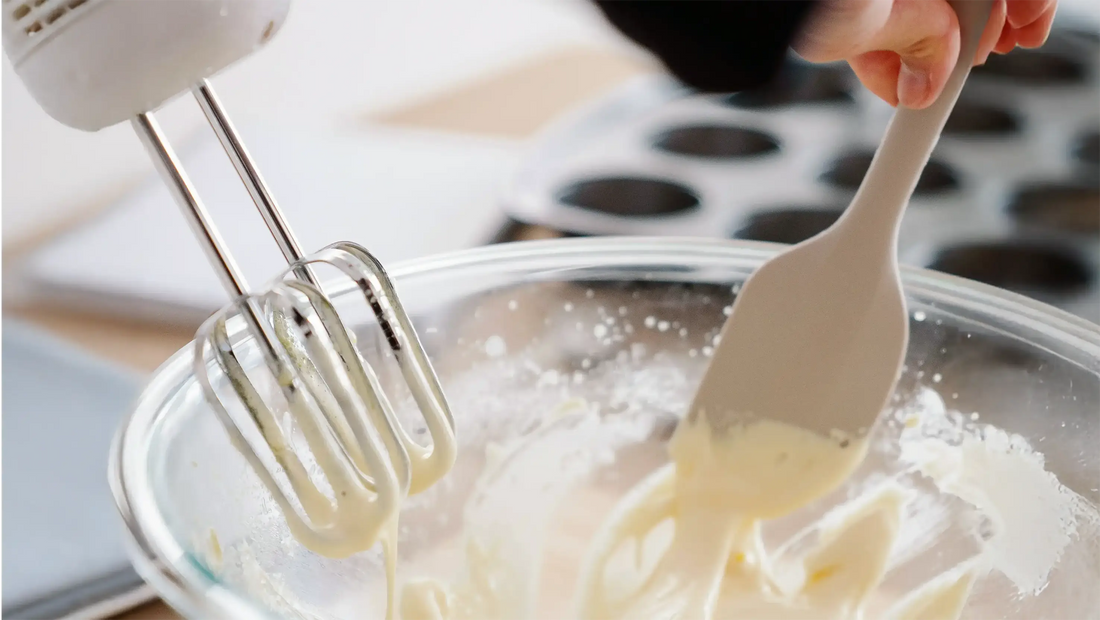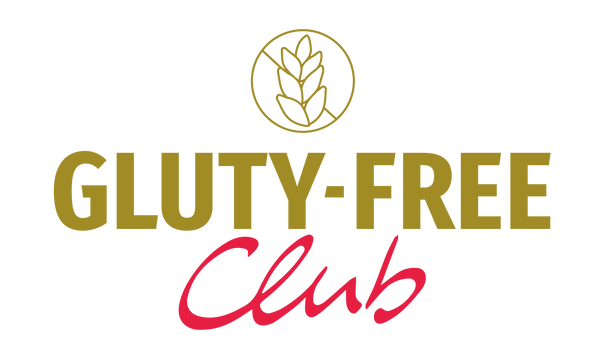
Snacking on raw gluten-free dough – yes or no?
Share
…and how you can still safely enjoy it! - We did some research:
The smell of fresh dough, sneaking a taste from the spoon—who doesn’t love it? Many think gluten-free dough is safe to eat raw because it has no gluten. But that’s not quite true: raw gluten-free dough can also pose health risks.
In this post, you’ll learn:
- Why gluten-free dough shouldn’t be eaten raw
- Which gluten-free flours can be risky
- And how to easily make a delicious, safe cookie dough yourself!
Why is raw dough risky?
The issue isn’t gluten, but two other common ingredients in nearly every dough:
- Raw eggs — can be contaminated with Salmonella
- Raw flour — may contain E. coli, Bacillus cereus, or mold spores
These germs are reliably killed only during baking. Eating raw dough can lead to stomach issues or food poisoning.
Why do warnings often only appear on gluten-free flours?
Good question! Here’s why:
- Duty of care: Gluten-free product makers label more carefully because their customers often have celiac disease or food intolerances.
- Higher germ risk: Some gluten-free flours (e.g., rice, corn) are more prone to contamination.
- Consumer protection: Many people mistakenly assume gluten-free means automatically healthy and safe to eat raw.
Which fluten-free flours are risky to eat raw?
Here’s a quick overview:
|
Type of Flour |
Safe to Eat Raw? |
Notes |
|---|---|---|
|
Rice flour |
No |
May contain Bacillus cereus. |
|
Corn flour / Cornstarch |
No |
Possible mold or bacterial contamination. |
|
Buckwheat flour |
Rather not |
Usually not heat-treated. |
|
Chickpea & Soy flour |
No |
Contains lectins – harmful when raw. |
|
Oat flour |
Caution |
Low risk, but best when heat-treated. |
|
Almond flour (blanched) |
Yes |
Usually heat-treated – considered safe. |
|
Coconut flour |
Yes |
Typically decontaminated and safe. |
|
Flaxseed meal |
In moderation |
Safe, but avoid large quantities raw. |
…and how you can still safely enjoy it! - We did some research:
The smell of fresh dough, sneaking a taste from the spoon—who doesn’t love it? Many think gluten-free dough is safe to eat raw because it has no gluten. But that’s not quite true: raw gluten-free dough can also pose health risks.
In this post, you’ll learn:
- Why gluten-free dough shouldn’t be eaten raw
- Which gluten-free flours can be risky
- And how to easily make a delicious, safe cookie dough yourself!
Why is raw dough risky?
The issue isn’t gluten, but two other common ingredients in nearly every dough:
- Raw eggs — can be contaminated with Salmonella
- Raw flour — may contain E. coli, Bacillus cereus, or mold spores
These germs are reliably killed only during baking. Eating raw dough can lead to stomach issues or food poisoning.
Why do warnings often only appear on gluten-free flours?
Good question! Here’s why:
- Duty of care: Gluten-free product makers label more carefully because their customers often have celiac disease or food intolerances.
- Higher germ risk: Some gluten-free flours (e.g., rice, corn) are more prone to contamination.
- Consumer protection: Many people mistakenly assume gluten-free means automatically healthy and safe to eat raw.
Which fluten-free flours are risky to eat raw?
Here’s a quick overview:
Now the fun and risk free part:
Recipe: Edible Cookie Dough (Gluten-Free & Egg-Free)
Ingredients:
- 100g blanched almond flour
- 50g finely ground gluten-free oats
- 2 tbsp maple syrup or agave nectar
- 2 tbsp almond butter (or cashew butter)
- 1 tsp vanilla extract
- Pinch of salt
- 2–4 tbsp plant milk (as needed)
- 30g gluten-free chocolate chips (optional)
Preparation:
- Grind oats finely in a blender.
- Mix dry ingredients.
- Add wet ingredients and stir well.
- Fold in chocolate chips if you like — done!
Tip: Store dough in the fridge for 3–4 days—perfect for a snack!
Conclusion
Even though gluten-free dough is often seen as “healthier,” it’s not automatically safe raw! But thanks to our recipe, you don’t have to miss out—using heat-treated ingredients, you can enjoy a sweet dough treat without worry.
Disclaimer: The information provided in this article is based on careful research and personal experience. However, it does not replace professional medical advice. Despite our best efforts, we accept no liability for the accuracy, completeness or timeliness of the content.
